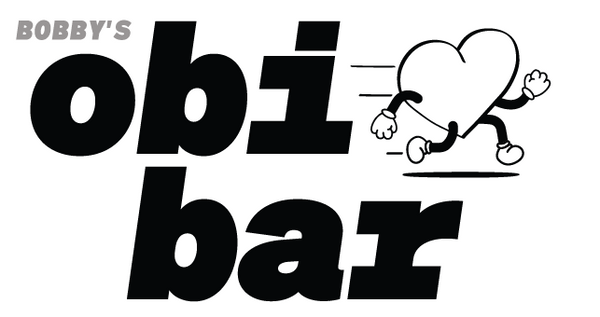A deeper dive into dietary fiber - The article explains the different types of fiber, their benefits, how they work, and the good sources of each fiber. It also sheds light on why oat fiber is uniquely beneficial compared to other fibers commonly used in snack foods.
The importance of fiber in our diets is often overlooked today. However, the health and digestive benefits of fiber are clear. They include slowing sugar absorption into the bloodstream, improving gut health, reducing cholesterol, improving regularity, and avoiding constipation. The FDA recommends that adults eat 28 grams of fiber per day. Generally, Americans do not eat enough fiber due to the rise in the consumption of highly processed foods, the on-the-go lifestyle of many consumers, and the recent popularity of high-protein and high-fat diets. The average US man consumes about 17 grams of fiber daily, while women consume about 15 grams.
Fiber 202
The two fiber types are insoluble and soluble, each with particular benefits. Insoluble fiber acts like a broom in the digestive system, sweeping waste out of your body to promote regularity and avoid constipation. Soluble fiber acts as a sponge when it dissolves in your digestive system. Certain soluble fibers form a thick, gel-like substance that makes you feel fuller longer, slows the absorption of sugar into the bloodstream, and can contribute to weight control. The FDA also recognizes some of these fibers for their ability to reduce LDL (bad) cholesterol.
Some soluble fibers are considered prebiotic fibers, which promote gut health. They feed microorganisms in the large intestines that are essential for our health. The term “prebiotics” should not be confused with “probiotics”. The former is the food for healthy microorganisms, while the latter is a specific type of microorganism in the gut (like those from yogurt). The probiotics and other organisms fed by prebiotics contribute to body immunity against pathogens, process particular vitamins, and even contribute to our mental well-being. The feeding of these microorganisms also causes a fermentation of the prebiotic carbohydrates to produce short-chain fatty acids (SCFAs). SCFAs have particular benefits, including bringing energy to the colon cells and anti-inflammatory effects.
Another interesting aspect of dietary fibers that is not well understood by consumers is that although they are carbohydrates, they are not counted as calories in food since they are not digested by the body. This is why a fiber-rich diet can help you feel full while providing weight control benefits.
An aspect of fiber that can be confusing is whether the fibers are natural or extracted. Natural fibers are simply those that are consumed naturally through foods. Extracted fibers are extracted from plant sources and incorporated into packaged foods or supplements.
The table below attempts to organize fibers understandably. For further information, the following website link is one of the best links I have found for the total amount of fiber in various foods and the breakdown between soluble and insoluble fiber.
Oat Fiber Halo
Oat fiber is unique in two ways. First, it contains about 60% soluble fiber and 40% insoluble fiber, providing benefits of each. Further, the majority of the soluble fiber in oat fiber is beta-glucan. Unlike most soluble fibers, beta-glucan offers multiple benefits. It forms a particularly thick gel-like substance in the digestive tract to create a feeling of fullness, slows sugar absorption, and reduces LDL (bad) cholesterol. Beta-glucan is also a prebiotic that contributes to gut health. As a prebiotic, beta-glucan ferments more slowly than other prebiotics in the lower intestines, making it much more GI-friendly than other prebiotic fibers.

Inulin is a soluble fiber extract widely used in snacks and other foods, often resulting in a high fiber content on the nutrition label. It is also commonly listed as chicory root fiber. Being a prebiotic fiber, inulin's clearest benefit is gut health. Unlike beta-glucan and mucilages though, it is not recognized as a fiber that reduces cholesterol. Inulin is also highly fermentable, leading to gas production in the intestines. This can cause GI discomfort for people sensitive to high-FODMAP (highly fermentable) foods or people with Irritable Bowel Syndrome (IBS).
Obi Bar
I created obi bar to provide high protein and fiber from real food. The high fiber in an obi bar helps keep you full for hours while providing health benefits. In fact, obi bar is the only high-protein bar to contain as much oat fiber as a bowl of steel-cut oats. It contains an oat bran uniquely ground and sifted to obtain a high level of oat fiber. In addition to oat bran, obi bar derives fiber from almonds, dates, cocoa, and blueberries. We are so proud of the fiber in our obi bar that we break out the fiber content on the nutrition label to show total fiber and soluble fiber.

Because obi bar fills you up with all-natural ingredients, it makes a healthy on-the-go meal or a filling snack. It is a real food bar with the perfect balance of great taste and healthy eating.
This article should not be taken as medical advice or expert opinion. Readers should seek medical advice from their own doctor. This article reflects the research and findings of Bobby Sales in developing Bobby’s obi bar.


